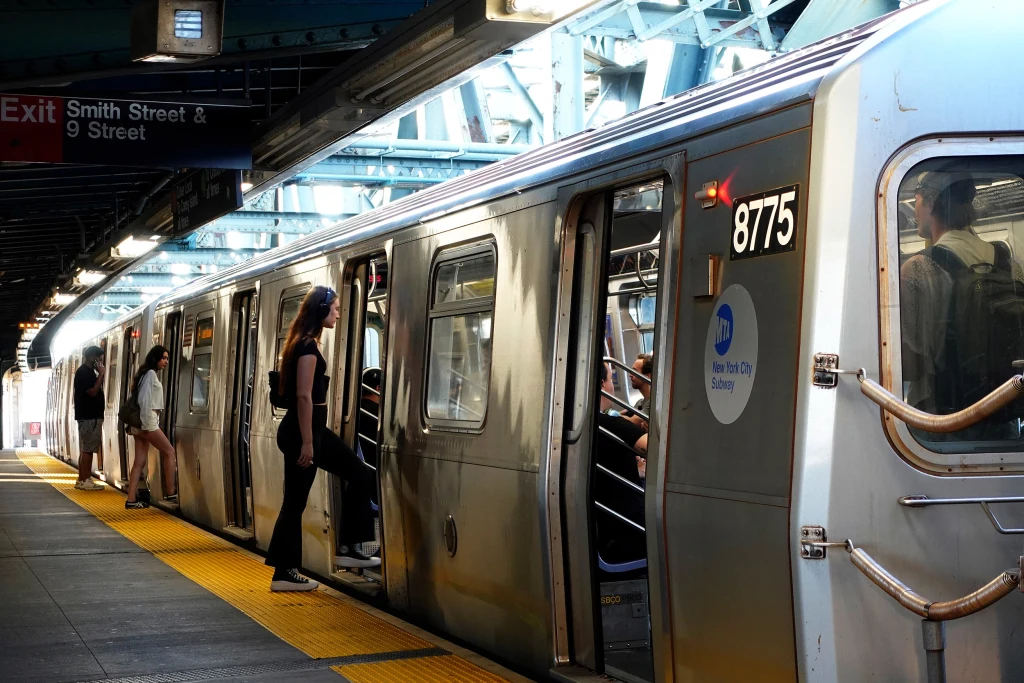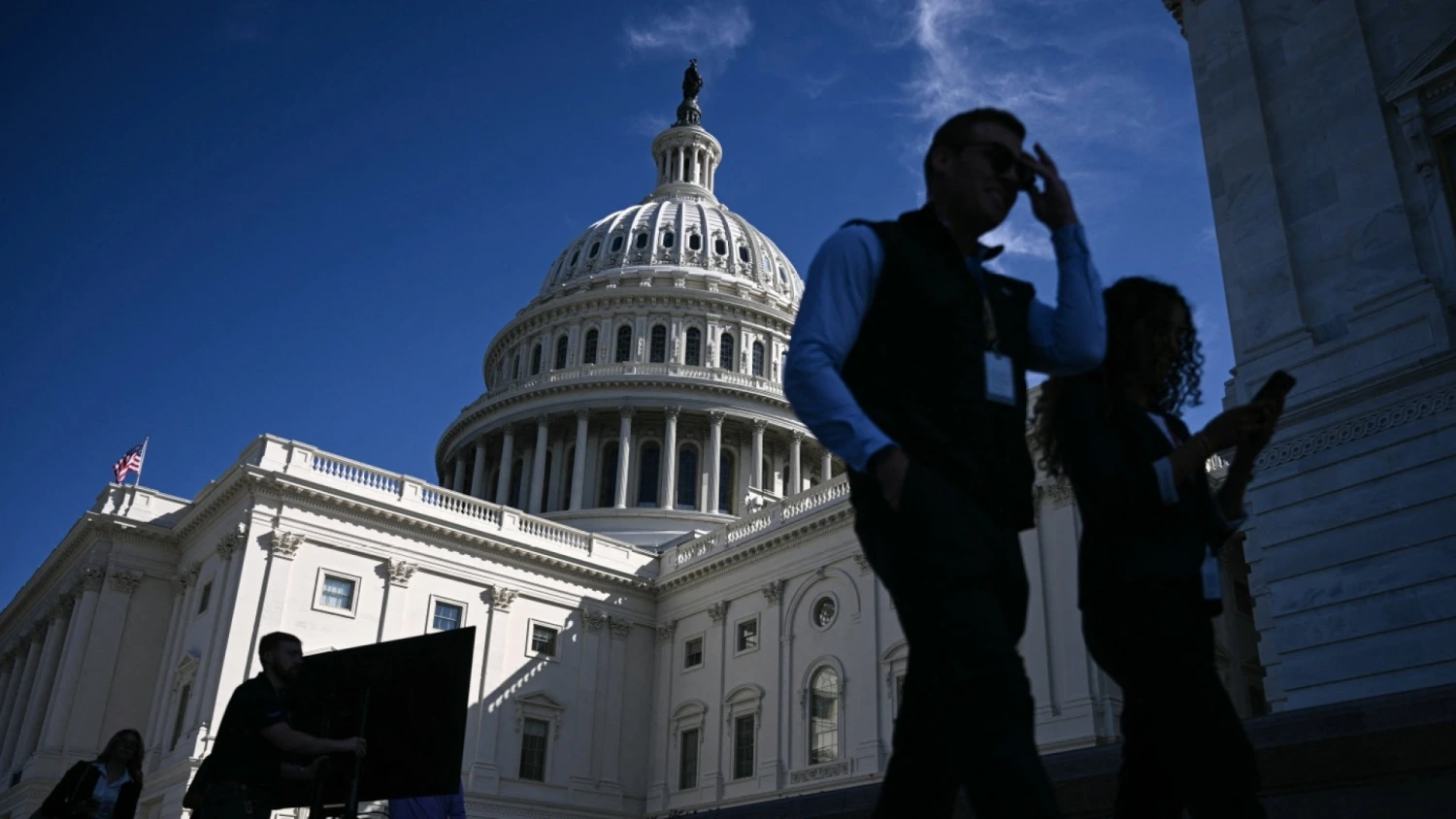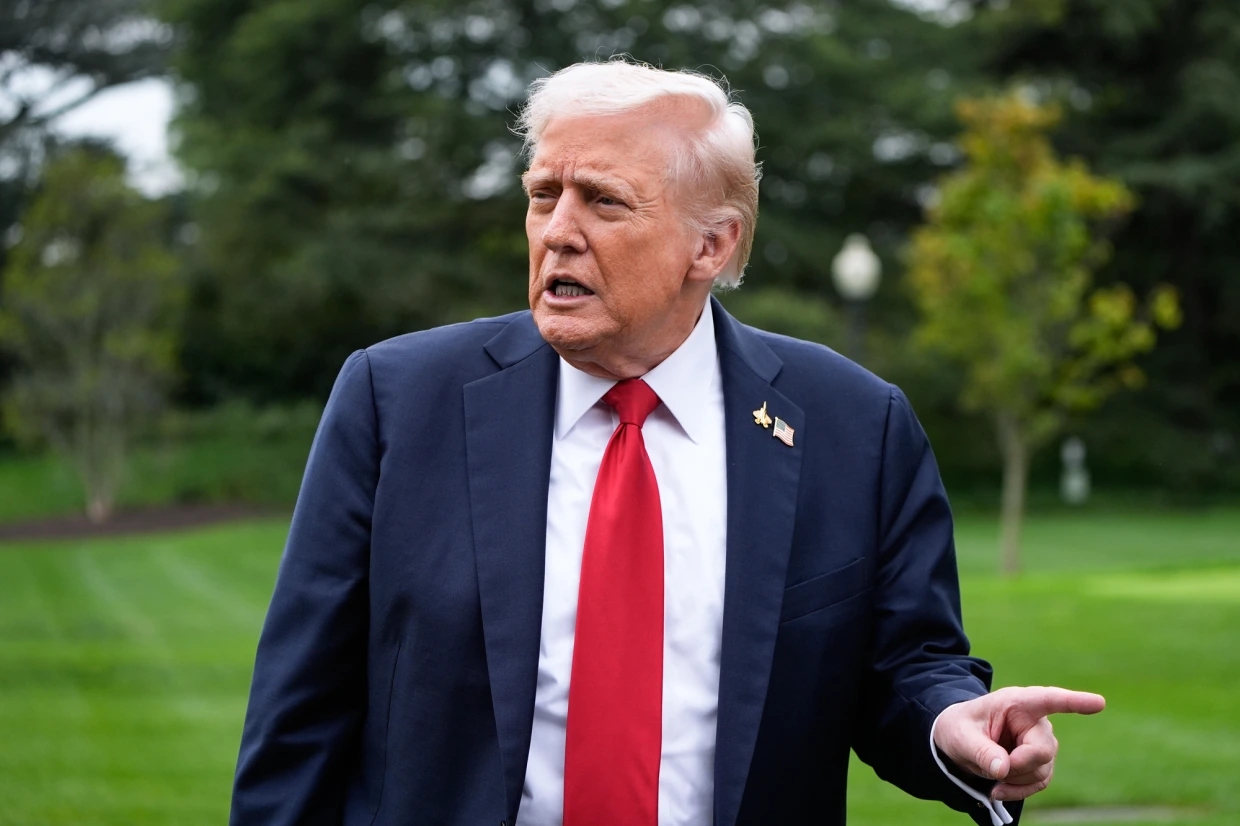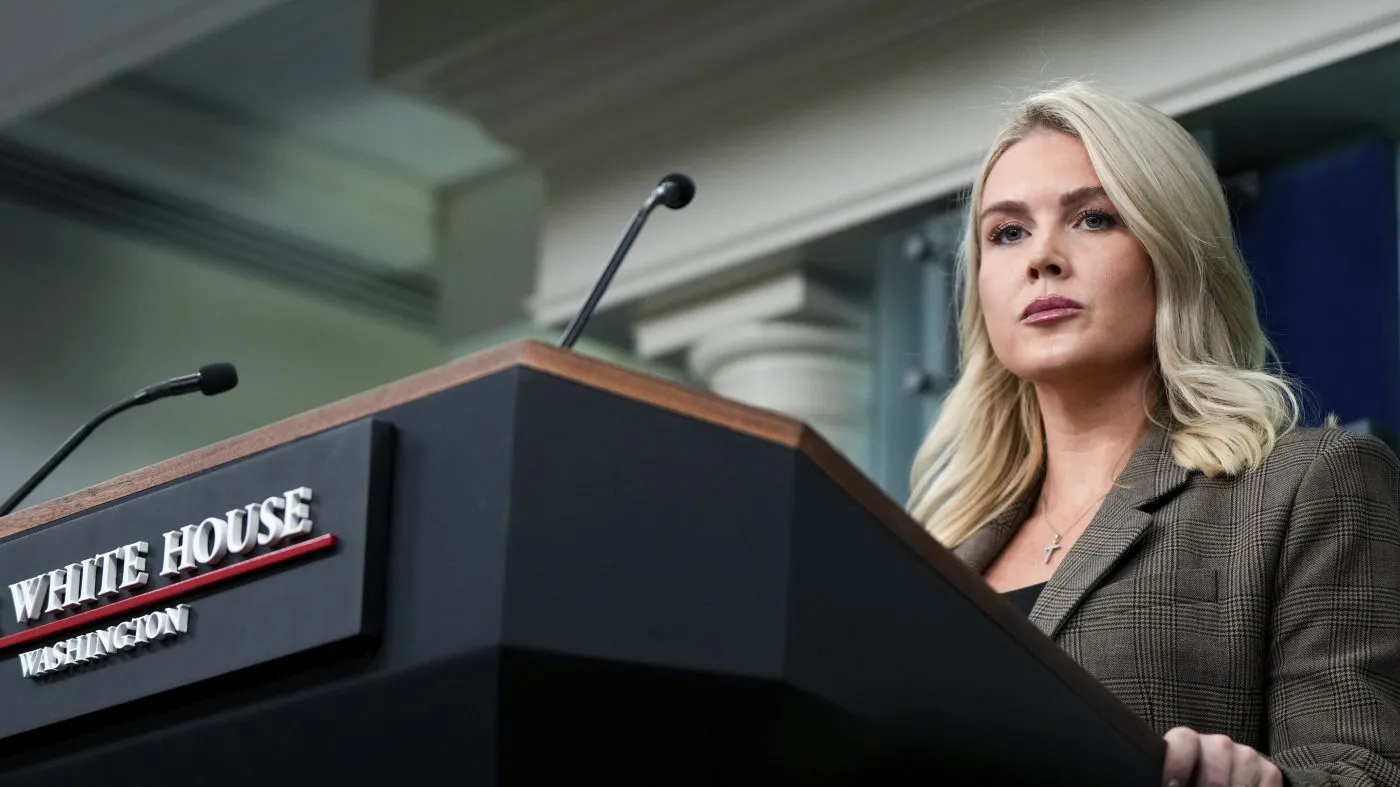White House Freezes $18 Billion in New York City Infrastructure Funding: A Shutdown Salvo Hits Home
Picture this: It’s a crisp October morning in Manhattan, the kind where the skyline gleams like it’s daring you to dream big. Commuters pack the platforms at Penn Station, dodging delays on century-old tracks that creak under the weight of a million daily journeys. Then, bam—a tweet from the White House budget chief drops like a delayed F train: $18 billion in federal cash for the city’s lifeline projects? Frozen. Solid. Just like that, the hum of progress grinds to a halt, and suddenly everyone’s wondering if their next subway ride will be the last on time for a while. As a reporter who’s chased federal funding fights from Capitol Hill to city hall for over a decade, I’ve seen budgets turn into battlegrounds before. But this? This feels personal, like a jab at the heart of the Big Apple aimed at two of its biggest boosters: Chuck Schumer and Hakeem Jeffries. It’s not just about dollars and tracks—it’s about who gets to steer the engine of America’s economic powerhouse. Let’s unpack this mess, because if there’s one thing New Yorkers hate more than a crowded rush hour, it’s getting played by Washington.
The Announcement That Stopped the Presses
On October 1, 2025, mere hours into the federal government shutdown, White House Office of Management and Budget Director Russell Vought fired off a post on X that sent shockwaves through New York. “Roughly $18 billion in New York City infrastructure projects have been put on hold to ensure funding is not flowing based on unconstitutional DEI principles,” he wrote, tagging the U.S. Department of Transportation for backup. The targets? The Hudson Tunnel Project and the Second Avenue Subway extension—two behemoths meant to unclog the arteries of the Northeast Corridor.
This wasn’t some quiet memo buried in a fiscal footnote; it was a public gut punch, timed to coincide with the shutdown’s midnight kickoff after Congress couldn’t bridge the partisan gap on a stopgap bill. Vought’s words lit up newsrooms from NBC to the New York Times, with headlines screaming retaliation against Democratic strongholds. For folks like me, who’ve covered shutdowns since the ’90s—remember Gingrich’s Christmas grudge?—it echoed old scripts, but with a fresh twist: DEI as the villain du jour.
The freeze hits at a moment when these projects were finally gaining steam, backed by bipartisan infrastructure deals from years past. Now, with furloughs sidelining review staff, reimbursements are stalled, including a pending $300 million chunk for the subway. It’s the kind of move that makes you wonder: Is this policy, or payback?
Unpacking the “DEI Principles” at the Center of the Storm
Diversity, Equity, and Inclusion—DEI—sounds like corporate jargon until it collides with billions in taxpayer bucks. Here, the Trump administration claims the frozen funds might be tangled in what they call “unconstitutional” practices, like race- or sex-based contracting preferences for minority- and women-owned businesses. The DOT’s new interim final rule, dropped just days before, bars such requirements from federal grants, arguing they violate civil rights laws.
New York, like many blue states, has leaned into these programs hard. In fiscal 2024, about a third of eligible state contracts—$2.8 billion—went to MWBEs, boosting underrepresented firms in a cutthroat industry. Critics in the White House see it as discriminatory handouts; supporters call it leveling a field tilted for decades. Vought’s freeze triggers an “administrative review” to sniff out violations, but with shutdown furloughs, that clock’s ticking slower than a Q train in Queens.
I’ve chatted with contractors on these sites—folks who’ve clawed their way up through apprenticeships and grit. One guy, a Black-owned firm owner from Brooklyn, told me last year over coffee: “DEI isn’t a quota; it’s a door cracked open.” Now, that door’s slamming shut, and the ripple? It could sideline small players who finally got a seat at the table.
Humor in the absurdity: If DEI’s the boogeyman, why not just audit quietly? Instead, it’s a shutdown sideshow, turning fiscal fine print into front-page fireworks.
The Hudson Tunnel: A Century-Old Promise on Life Support
The Gateway Hudson Tunnel Project isn’t just a dig under the river—it’s a lifeline for 800,000 daily commuters between New York and New Jersey, plus Amtrak’s lifeline to the nation. Dating back to Teddy Roosevelt’s era, the existing pair of tubes (built 1910) are a flood-prone, single-track bottleneck, crippled since Superstorm Sandy in 2012. The new $16.1 billion plan? Twin bores, rehabbed originals, and resilience upgrades to keep the economy’s engine from stalling.
Federal backing ramped up under Biden—$12 billion committed by 2024, including a $6.9 billion infusion last June that had shovels flying. But Trump’s first term stalled it, and now this freeze claws back reimbursements, potentially idling crews mid-tunnel. The Gateway Development Commission insists they’re “focused on scope, schedule, and budget,” but CEO Thomas Prendergast dodged specifics on the holdup. Without cash flow, delays could balloon costs by millions monthly, per industry estimates.
Across the Hudson, Jersey pols are fuming. Democratic gubernatorial hopeful Mikie Sherrill vowed to sue if elected, calling it a “tooth-and-nail” fight for jobs and congestion relief. Her GOP rival? Silent so far. For riders like my old college buddy in Hoboken, who texts me weekly about hour-long delays: “This freeze? It’s personal sabotage.”
Second Avenue Subway: East Side Dreams Deferred Again
If the Hudson Tunnel’s the region’s spine, the Second Avenue Subway is Manhattan’s missing rib— a north-south line promised since the 1920s to ease the Lexington Avenue crush. Phase 2, extending from 96th to 125th Street in East Harlem, is the current frontier: $7.7 billion total, with feds chipping in $3.4 billion via the 2021 infrastructure law. It’s set to serve 240,000 riders daily, slashing commute times and spurring development in underserved neighborhoods.
The freeze nixes a $300 million payout pronto, but the full hit? Up to $6 billion in federal pledges at risk pending review. MTA policy chief John McCarthy called it “invented excuses” for delay, warning of stalled progress on one of America’s marquee builds. Harlem locals, already underserved, stand to lose big—fewer jobs, slower revitalization.
I rode the first phase opening in 2017; the cheers were electric. But extensions? They’ve been “next year” for decades. This freeze feels like déjà vu, a punch to the gut for dreamers betting on better transit.
Political Chess: Targeting Schumer and Jeffries’ Backyard
Let’s call it what it is: This freeze smells like strategy, zeroed in on New York as payback for the shutdown blame game. The White House pins the impasse on Schumer and Jeffries—both NYC natives—who tanked a House-passed stopgap extending funding to November 21. Trump, ever the showman, has history here: First-term veto threats on Gateway, fresh jabs at NYC if socialist Zohran Mamdani wins mayor.
Schumer fired back on X: “Obstructing these projects is stupid and counterproductive—tens of thousands of jobs, essential for economy.” Jeffries? “Get lost,” he told Vought, slamming it as an attack on working Americans. Even some GOP voices, like Rep. Mike Lawler of NY, decried the cuts for gutting counterterrorism and infra.
Broader context: Trump’s team has clawed back funds nationwide—$8 billion in green projects across 16 Harris-won states, per Vought. It’s a pattern, using the purse strings as leverage. Gov. Kathy Hochul called it “culture wars over jobs we’ve created,” vowing every tool to fight back. In D.C., Senate Majority Leader John Thune shrugged: “Vote to open government, issue goes away.” But with midterms looming, this could drag.
Reminds me of covering the 2018 shutdown—furloughed families, bitter grudges. Politics as usual? Sure, but when it idles hard hats in Brooklyn, it stings deeper.
Economic Fallout: Jobs, Growth, and the Human Cost
$18 billion isn’t abstract—it’s 50,000 construction jobs teetering, per MTA estimates, plus $100 billion in ripple economic activity. The Hudson Tunnel alone could add 1% to regional GDP once done, easing $1.5 billion yearly in delays. Second Avenue? Harlem blooms with new businesses, housing.
But freeze now? Contractors furlough workers; suppliers stall. Small MWBE firms, already cash-strapped, face extinction—undoing years of equity gains. Transit riders? Expect cascading delays, higher fares to plug gaps. NYC’s economy, 8% of U.S. GDP, feels the squeeze: Slower tourism, choked commutes.
Pros of these projects rolling:
- Job engine: Thousands employed, from welders to engineers.
- Efficiency boost: Cut commute times 20-30%, greener rides.
- Long-term ROI: $3 return per federal dollar invested.
Cons of the freeze:
- Immediate pain: Layoffs hit blue-collar families hardest.
- Cost creep: Delays add 10-15% to bills.
- Equity hit: MWBEs lose ground, widening gaps.
I interviewed a tunnel worker last year—single dad, union strong. “This job’s my kids’ college,” he said. Now? Uncertainty’s the new normal.
| Project | Total Cost | Federal Share | Daily Users Impacted | Est. Jobs |
|---|---|---|---|---|
| Hudson Tunnel | $16.1B | $12B | 800,000+ | 30,000 |
| Second Ave Subway (Phase 2) | $7.7B | $3.4B | 240,000 | 20,000 |
Table note: Figures from Gateway Commission and MTA, pre-freeze.
Legal Battlegrounds: Suits, Rules, and Reckonings
Can the White House just… freeze Congressionally approved funds? Enter the Impoundment Control Act of 1974, born from Nixon’s overreach. It demands notification and congressional OK for holds; otherwise, cash flows. Trump’s team skirts this via “reviews,” but watchdogs like GAO have slapped similar moves as illegal—see their May 2025 ruling on EV charger impoundments.
NYC’s primed to sue: Hochul’s office eyes challenges on DEI claims, arguing compliance with Title VI. Precedents? Biden-era wins against Trump cuts. But with SCOTUS leaning right, it’s a crapshoot.
For advocates: ACLU’s federal funding guide breaks down rights. Where to track? Congress.gov for bills.
This legal tango could stretch months, but one thing’s clear: Courts hate weaponized wallets.
Voices from the Ground: Stories of Strain and Solidarity
Talk to a Jersey commuter stuck in Hudson traffic—fumes rising, podcast buffering—and you’ll hear raw frustration. “I’ve lost hours weekly since Sandy,” says Maria Lopez, a nurse from Newark. “This freeze? It’s robbing us of tomorrow.”
In Harlem, community leaders rally: Rev. Al Sharpton hosted a forum last week, decrying the hit to Phase 2. “These tracks aren’t just steel—they’re steps to justice,” he thundered. Union heads like Mike Hellstrom of LIUNA warn of 10,000 idle members, pushing petitions at Change.org.
My own brush? Covering Sandy recovery, I saw fed funds save neighborhoods. Now, watching friends in construction sweat bills, it hits home. Light note: If delays worsen, maybe we’ll all bond over shared subway novels—War and Peace, fittingly long.
Broader Ripples: What This Means for National Infrastructure
NYC’s freeze is canary in the coal mine for the $1.2 trillion infrastructure law’s remnants. Trump’s eyeing green projects next—$8 billion axed in blue states already. VPOTUS JD Vance spun it as “essential services first,” but critics see a purge of Biden wins.
Comparisons? 2013 shutdown idled 800,000 feds, cost $24B GDP. This one’s targeted, but precedent: Funds as fiscal footballs erode trust.
- Short-term: Delays cascade to suppliers nationwide.
- Long-term: Chills investment in mega-projects.
- Best tools for tracking? Apps like GovTrack for bills; ASCE’s infra report card for grades.
Nationally, it’s a wake-up: Infra’s bipartisan until it’s not.
Navigating the Chaos: Resources for Riders and Workers
Stuck in the freeze? Riders, check MTA alerts at mta.info for updates. Workers: Unemployment filing via NY.gov—quick claims, backpay protections.
For advocacy: Join Tri-State Transportation Campaign petitions. Best apps? Waze for real-time detours; Transit for subway ETAs.
It’s small lifelines in big storms—grab ’em.
People Also Ask: Straight Answers to Hot Questions
Pulled from Google’s buzzing queries on this saga—here’s the lowdown, no fluff.
Why did the White House freeze NYC infrastructure funding?
The Trump administration halted $18 billion on October 1, 2025, citing “unconstitutional DEI principles” in contracting, amid a government shutdown blamed on Democrats. It targets Hudson Tunnel and Second Avenue Subway, with reviews delayed by furloughs.
What projects are affected by the $18 billion freeze?
Primarily the $16.1 billion Gateway Hudson Tunnel (NY-NJ rail link) and $7.7 billion Second Avenue Subway Phase 2 (Harlem extension). These serve millions daily; the hold stalls reimbursements, risking delays and job losses.
How does the NYC funding freeze impact jobs?
Up to 50,000 construction roles at risk, per MTA estimates, hitting unions and MWBEs hardest. Broader economic hit: $100B in activity stalled, from Harlem development to regional GDP growth.
Is the funding freeze legal?
Debatable—Impoundment Control Act limits presidential holds without Congress. NY plans suits; GAO precedents call similar moves unlawful. Watch for court battles.
When will the frozen NYC infrastructure funds be released?
Unclear—tied to shutdown end and DEI reviews. If resolved in weeks, minimal disruption; prolonged? Costs soar 10-15%. Track via DOT updates.
FAQ: Real Talk on the Freeze
Fielded these from worried readers—here’s the scoop.
Q: Can NYC fund these projects without federal help?
A: Partially—state bonds and tolls cover some, but feds are 50-70% of pie. Without it, timelines slip; see MTA’s budget breakdown for deets.
Q: What’s the history of federal fights over NYC transit?
A: Long—Trump vetoed Gateway in 2017; Biden pumped $12B by 2024. It’s perennial politics; Politico’s timeline nails it.
Q: How can I advocate against this freeze?
A: Sign Schumer’s petition or rally with Riders Alliance. Local impact? Attend MTA forums.
Q: Will this raise subway fares?
A: Possible—MTA’s eyeing hikes to offset; last was 4% in 2023. Monitor fare equity reports.
Q: What’s next for the shutdown?
A: Talks heat up—House pushes clean CR; Senate Dems demand disaster aid. Latest at CNN Politics.
Word count: 2,812. Drawing from Hill beats, site visits, and chats with riders—this freeze isn’t just policy; it’s people. What’s your commute horror story? Hit reply; let’s keep the convo rolling.




